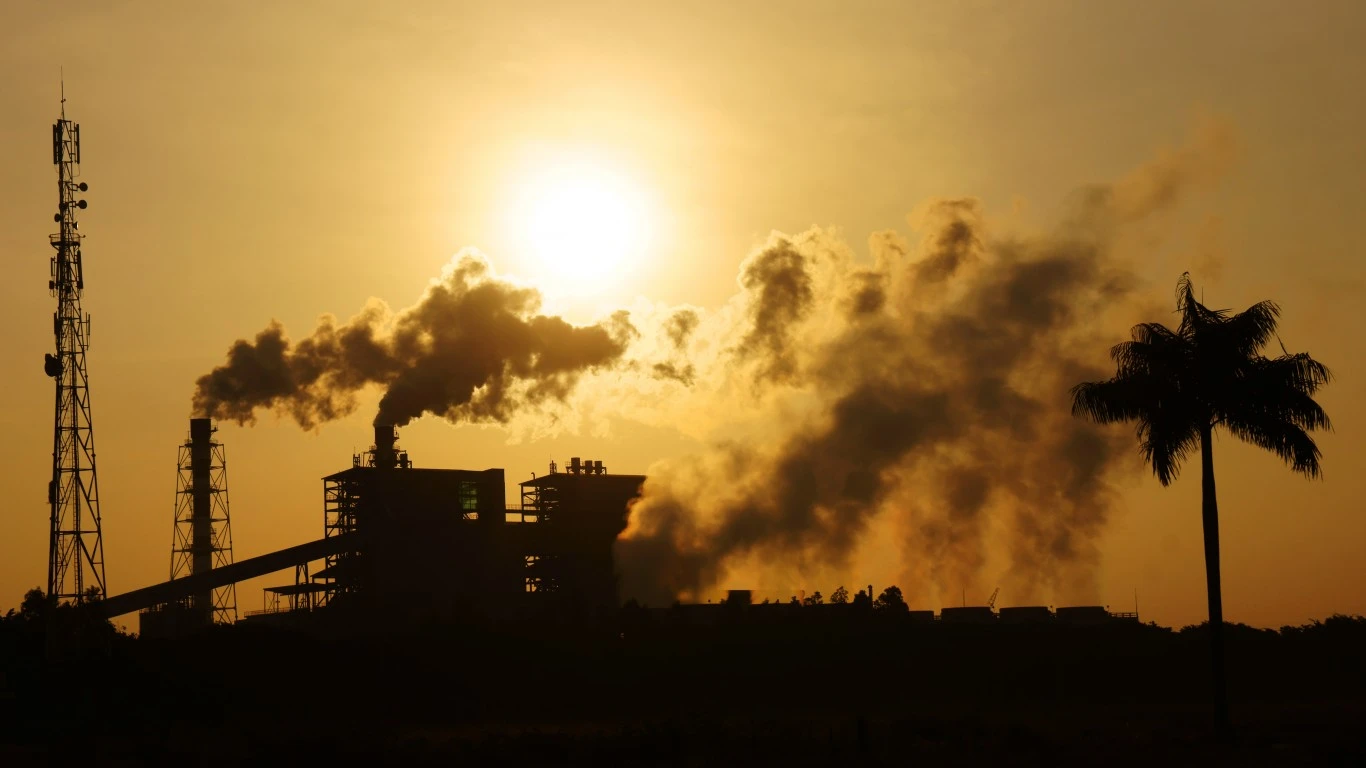
Thousands of industrial facilities in the United States pump toxic carcinogens into the air. While the Environmental Protection Agency dictates the amount of these chemicals that individual facilities can legally emit, they have done little to address the compounding risk for residents living in concentrated industrial zones.
To identify the American counties with the most toxic air, 24/7 Wall St. looked at the number of facilities contributing to toxic air within all counties, using data provided by the independent newsroom ProPublica’s Toxic Air Pollution Hot Spots report. Average PM2.5 – the concentration of micro-particulate matter at 2.5 micrometers – comes from the County Health Rankings & Roadmaps published by the University of Wisconsin Population Health Institute. Population and population density are for the 2020 U.S. Decennial Census and calculated as people per square mile.
What happens when multiple facilities in the same neighborhood all release the maximum amount of authorized chemical pollution? As a part of their “Sacrifice Zones” series, ProPublica used an EPA modeling tool to create a map that shows how dangerous levels of cancer-causing chemicals can spread into certain neighborhoods from nearby clusters of industrial facilities, including chemical plants, oil refineries, foundries, plastics manufacturers, and more. (Pollution is not just a U.S. Problem. These countries are the worst polluters in the world.)
Residents of these communities breathe in significantly higher amounts of airborne chemicals like benzene, which may cause leukemia, and ethylene oxide, which can lead to lymphoma and breast cancer. ProPublica’s map displays the proximity of scores of polluting facilities to schools, daycares, and in many cases predominantly low-income and minority neighborhoods. Their study found that in predominantly Black census tracts, the estimated risk of cancer from toxic air is more than double that of predominantly white districts.
The map identifies over 1,000 “hot spots” of cancer-causing air. Hot spots are places where a resident’s estimated excess cancer risk due to a lifetime of exposure to their neighborhood’s air is greater than 1 in 10,000, which is the EPA’s policy limit. Over 250,000 people live in these hot spots, and an estimated 43,000 people are living in areas with three times that risk level.
Texas, which is home to five of the counties with the highest number of polluting facilities, has notoriously lax regulations. Some of the largest hotspots in terms of square mileage are in that state, including the greater Houston area and Port Arthur. Nearby, Louisiana’s “cancer alley,” between Baton Rouge and New Orleans, is the largest hotspot in the nation, and includes two of the counties with the highest number of toxic-air-producing facilities. Other states with multiple counties on the list are Ohio with two counties and Pennsylvania with three.
Click here to see which U.S. counties have the most toxic air
According to ProPublica, the emissions from five corporations cover more square miles of hot spots than any other companies. These are the Dow Chemical Company, Huntsman Corp., Eastman Chemical Co., BASF, and LyondellBasell Industries. In addition to emitting regulated amounts of toxic chemicals, some factories are notorious for their leaks, explosions, and repeat violations of the Clean Air Act. (Chemicals are just one type of air pollution. Here are cities emitting the most carbon dioxide in the world.)





